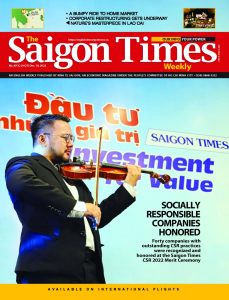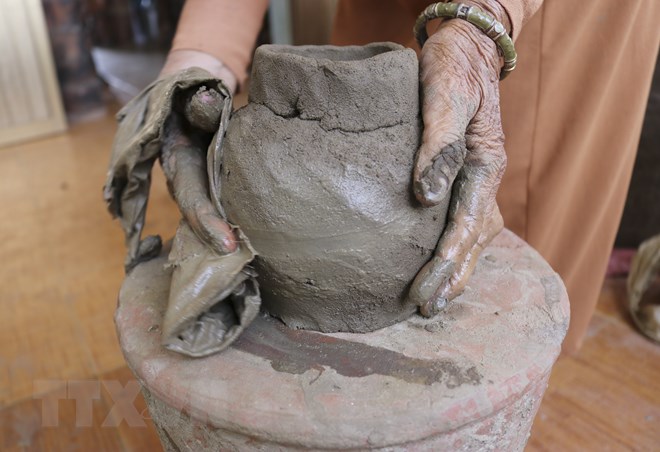On November 29, the art of pottery-making of Cham people was enrolled in the List of Intangible Cultural Heritage in Need of Urgent Safeguarding by the United Nations Educational, Scientific and Cultural Organization (UNESCO).
The decision was passed at the 17th session of the Intergovernmental Committee for the Safeguarding of the Intangible Cultural Heritage held in Rabat, Morocco, from November 28 to December 3.
Ambassador Le Thi Hong Van, permanent representative of Vietnam to UNESCO, told vietnamplus.vn that the Cham people’s art of pottery-making is the 15th intangible cultural heritage of Vietnam to be inscribed by UNESCO. She said with this inscription, the people in Ninh Thuan and Binh Thuan provinces will be aware well of the value of the traditional pottery-making of the Cham people among the intangible cultural heritages of Vietnam.
The UNESCO’s move will also prompt the need of practical and effective measures to preserve and promote this intangible cultural heritage of the Cham people, said Nguyen Long Bien, vice chairman of the People’s Committee of Ninh Thuan Province.
The traditional pottery-making has been playing an important role in the economy, culture and society of the Cham people since the end of the 12th century. Potteries are indispensable utensils in daily life of families and in the religion of the Cham community. To date, Cham potteries are made in Tri Duc, Binh Thuan, and in Bau Truc, Ninh Thuan.
“French-language book space” at Can Tho Public Library
On November 29, Can Tho Public Library coordinated with National Library of Vietnam (Hanoi) and Organisation internationale de la Francophonie (OIF) to open the “French-language book space” at the library in Can Tho City.
Kaloyan Kolev, representative of the OIF in Asia-Pacific, said the “French-language book space” is part of the program to boost French-language knowledge and culture implemented by the OIF. The project was carried out from 2020 to 2022 in Hanoi, Haiphong, Quang Ninh, Nghe An, Khanh Hoa, Lam Dong, Can Tho, Ben Tre and Binh Duong.
Nguyen Minh Tuan, director of the Department of Culture, Sports and Tourism of Can Tho City, told vietnamplus.vn that the “French-language book space” at Can Tho Public Library has 727 French book titles. Half of these books are in the social sciences, economics, education, linguistics, exact sciences, applied science, healthcare, agriculture, arts, sports and culture; the remaining books are for young readers and children.
As one of the eight libraries selected for the project, Can Tho Public Library has an advantage in developing the reading culture among the public.
An avid collector of ethnic musical instruments
Taking his passion for collecting musical instruments of the Ca Dong people, an ethnic minority group, one step further, Dinh Van Sieng from Quang Ngai Province has now set up a corner in his house to showcase the wide selection of musical instruments and other traditional items.
The decision came after he realized the cultural identity of the Ca Dong people was likely to fade away. The 34-year-old man wanted to do something to help preserve the rich and diverse Ca Dong culture.
In 2010, he returned home after fulfilling his mandatory military service. Sieng saw many residents in his hometown sell gongs and other traditional musical instruments, which are considered the soul of the Ca Dong people. Gong performances are an indispensable part of the Ca Dong traditional festivals to celebrate a new year or a new harvest season. However, now, most young people prefer modern music genres such as pop or rap to traditional music.

If the situation lingers, the next Ca Dong generations will soon no longer listen to the sound of gongs and other traditional musical instruments of their people, Sieng said, as reported by vietnamplus.vn.
Deciding to do something about the situation, after work, he spent time visiting many hamlets to encourage the local owners of Ca Dong traditional musical instruments to preserve the items for the next generations. To those who wanted to sell the instruments, Sieng bought them and preserved them himself.
Upon discovering his initiative, some older people in his village presented him with many traditional items.









